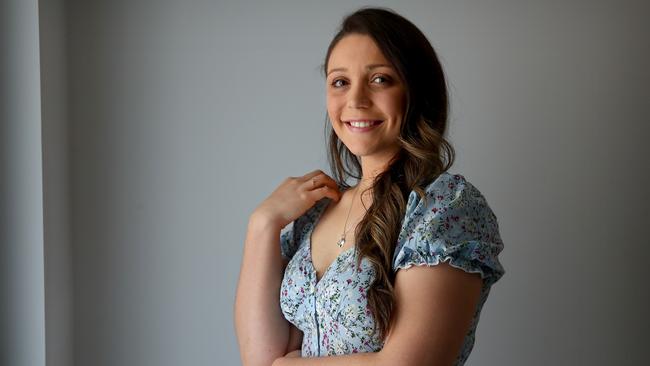Youth suicide: Alarming figures show increase in suicide deaths
The number of young Australians who suicided last year has increased, prompting concerns about the scale of the youth mental health crisis and suicide “clusters” across NSW.
NSW
Don't miss out on the headlines from NSW. Followed categories will be added to My News.
Thousands of Australian lives were lost to suicide last year with alarming new figures showing an increase in the number of adults and young people dying by suicide, prompting concerns about the suicide “clusters” which have devastated families and friends.
New cause of death data from the Australian Bureau of Statistics (ABS) has laid bare the extent of the nation’s suicide crisis — with 3318 lives lost to suicide across Australia in 2019, 937 of which were in NSW alone.
The rate of suicide across the nation is now the equivalent of more than nine lives lost each day — an approximately 6 per cent increase from 8.6 in 2018.
Suicide remains the 13th leading cause of death across all ages, taking more lives than breast and pancreatic cancer.
Since 2010, NSW has had the highest rate of death by suicide in Australia — a figure which has risen from 674 in 2010 to 937 people last year.
RELATED NEWS:
Two things that could prevent student suicides
Teen suicides trapped in COVID school bubble
The number of lives lost to suicide among men is significantly higher than women, with male suicides making up three-quarters of all suicides.
Australia’s National Suicide Prevention Advisor Christine Morgan says the rate of suicide has continued to climb in a “sombre reminder” of Australians’ mental health challenges.
“While in 2018 we were able to say there was a reduction in deaths it is not something we are yet seeing is a sustainable trend … What is happening in 2019 is it is coming back up. It is sad we have an average of over 9 Australians per day dying,” she said.
Suicide Prevention Australia CEO Nieves Murray said the figures are “heartbreaking and unacceptable” and highlight the need for suicide prevention legislation and the appointment of a National Suicide Prevention Office.
“Government needs to coordinate funding and build suicide prevention solutions into their policy decisions about issues as diverse as housing, employment, and helping people to build healthy social connections.”
YOUTH SUICIDE CRISIS LAID BARE
The rate of suicide among young people aged in their 20s has increased both nationwide and across NSW, sparking concerns about youth mental health and suicide “clusters.”
Australia-wide, the number of people aged 20-24 to lose their life to suicide jumped from 258 people to 288 in 2019 while for those aged 25-29 it increased from 277 to 309 Australians. This increase was markedly higher for men than women.
Despite the increase in suicide deaths for people in their 20s, the rate of suicide deaths for teenagers aged 15-19 decreased substantially nationwide.
In NSW alone, the rate of suicide for those aged 15-29 increased markedly on the previous year with 52 people aged 15-19 losing their life to suicide, 81 people aged 20-24 and 89 people aged 25-29 dying by suicide.
For those in the 15-29 age bracket, there was a 15 per cent increase in suicides from 192 deaths in NSW in 2018 to 222 in 2019.
Suicide continues to claim more young lives than any other cause of death – becoming the leading cause of death in Australia for those aged 15-49, according to Ms Morgan.
“When you look at the fact that some of the other causes of death are predominantly in older age groups and for suicide it is again the leading cause of death for those who are in the middle years of their life, it is a sombre reminder we have still a way to go until we reach the
point where we’re not losing our beloved Australians to suicide.”

Marc Bryant, director of Suicide Prevention at LivingWorks Australia, said the statistics highlight the scale of the youth mental health crisis and the importance of early intervention programs to prevent suicide “clusters” like those revealed by The Sunday Telegraph.
“The introduction of early surveillance is important so we can intervene quickly when we see a potential increase, or cluster emerge,” Mr Bryant said.
Suicide survivor and speaker for mental health organisation Batyr, Bella Cini, says the figures are unsurprising because she has seen first-hand just how much young people are struggling.
“We need to provide better support as a society and community for young people so they can feel more encouraged to receive help,” she said.
SUICIDE DEATHS HIGHER IN REGIONAL NSW
The rate of suicide across NSW varied greatly between regional and metropolitan areas, with drought-ravaged and bushfire-affected parts of the state suffering more deaths by suicide.
Greater Sydney recorded the highest number of suicide deaths in Australia with 458 while the rest of NSW suffered 467 – an increase from 398 in 2018.
Mr Bryant says the figures illustrate the importance of ensuring the residents of country NSW have equal access to mental health support.
“We need to have more of a co-ordinated response regionally to ensure access to services in regional areas is the same as Greater Sydney and that can be done using things like digital innovation.”
The concerning new figures come as The Sunday Telegraph calls for more school counsellors at the state’s schools and mandatory mental health first aid training for teachers.
Mr Bryant says more support in schools could go some way in improving the state of youth mental health.
“I would encourage that, it would definitely put things in the right direction so young people can get the help they need.”
Lifeline: 13 11 14
Kids Helpline: 1800 551 800
